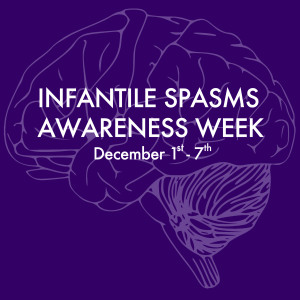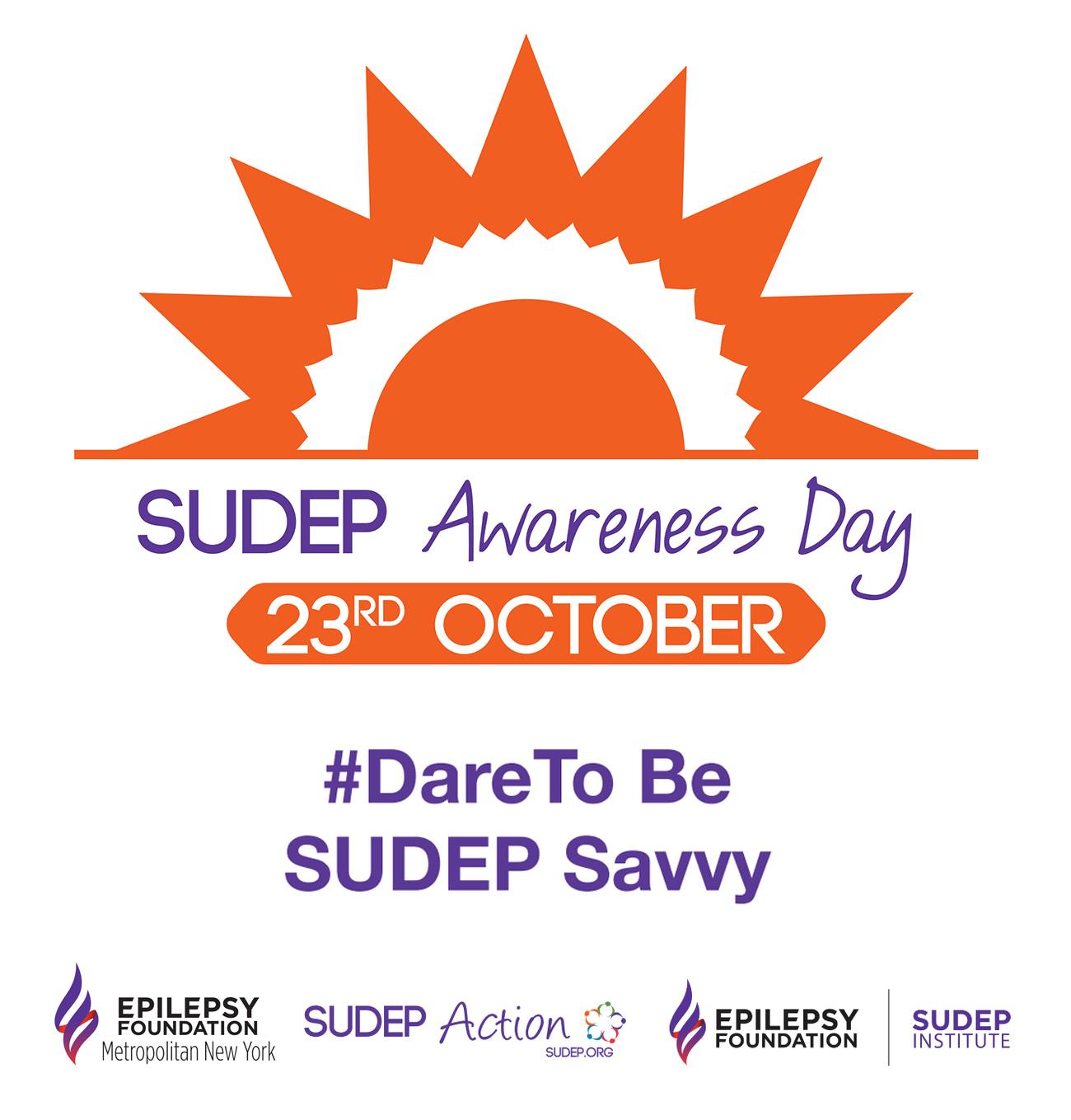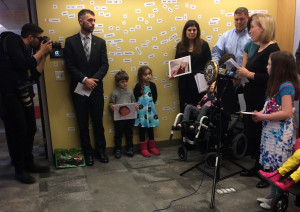Prognosis in Infantile Spasms – #EpilepsyNYC Infantile Spasms Awareness Week
Summary:
– The overall intellectual and neurodevelopmental outcome in children with infantile spasms is generally poor
– The long-term prognosis is directly related to the underlying cause of the seizures
– Better developmental outcomes are noted in patients without an identified cause (cryptogenic/idiopathic)
– Although the spasms tend to resolve by early to mid childhood, a majority of the children develop other types of seizures and epilepsies.
– There is a better outcome noted in those patients treated earlier in the course of their seizures, and in those that have an early and sustained response to treatment.

Infantile Spasms
The long-term prognosis of patients with infantile spasms has been studied extensively over the years. Many studies have examined the outcome of infantile spasms including neurodevelopmental and intellectual disabilities, prognostic significance of the EEG, and the development of chronic epilepsy.
The consensus of all of these studies is that the overall outcome, with regards to chronic epilepsy and neurodevelopmental disability is generally poor in patients with infantile spasms.
Chronic Epilepsy
Epileptic spasms usually resolve, latest by mid-childhood, in the majority of patients. Infrequently, spasms may persist in adulthood. Even if the spasms resolve, it has been found that 50-70% of the patients will develop other seizure types. Approximately 50% of the patients with a history of infantile spasms go on to develop chronic intractable epilepsy. There is a strong relationship seen between a history of infantile spasms (IS) and development of Lennox- Gastaut syndrome, with 18-50% of IS patients developing Lennox-Gastaut syndrome.
EEG
While features of hypsarrhythmia define the EEG of patients with infantile spasms, evidence of this abnormality on the first EEG was seen not to influence the response to treatment. However, if the hypsarrhythmia persisted despite treatment, or was atypical and/or asymmetrical, this was seen to adversely influence the long-term outcome.
Neurodevelopmental disability
The most important factor in predicting the cognitive and developmental outcome of patients is etiology.
Mental retardation occurs in about 70 % of patients with infantile spasms, usually involving severe to profound retardation and often associated with other psychiatric problems. Other neurological deficits, such as cerebral palsy, may be seen in about 30-50% of patients.
Most children with infantile spasms experience slowing, plateauing, or regression of their developmental progress.
Studies have consistently shown that infants with symptomatic infantile spasms are at much higher risk (86-90%) of developing mental retardation, autism and other behavioral and cognitive disabilities, compared to infants with idiopathic infantile spasms. Symptomatic infantile spasms, in particular, are associated with autism spectrum disorders (ASD) in up to 35% of cases.
10-20% of patients with normal development prior to the start of their spasms will have normal mental function or only be mildly impaired long-term. 28-50% of patients with idiopathic infantile spasms will go on to have normal or borderline cognitive development.
Mortality
The premature death rate for infantile spasm ranges from 5-31%. Most of the deaths (61%) occurred at or before age 3 years, while only 10% occurred after age 20 years.
In most cases, the mortality is seen to be a result of the underlying neurological cause of the infantile spasms.
Factors for a favorable outcome in Infantile Spasms
• Cryptogenic or idiopathic cause
• Age of onset of spasms > 4 months
• No atypical or partial seizures
• Typical EEG abnormalities – hypsarrhythmia
• Early onset of treatment
• Early and good response to treatment
Treating Infantile Spasms – #EpilepsyNYC Infantile Spasms Awareness Week
Infantile spasms is a potentially devastating early-onset epilepsy that affects infants, typically between three and nine months of age. Many cases of infantile spasms occur in children who are already have brain abnormalities, such as children with tuberous sclerosis, down syndrome, or brain injuries sustained as newborns. However, in about one third of affected infants, infantile spasms occur for no known reason.
There are three first-line treatments used for infantile spasms. Most pediatric neurologists select one of these three as the initial treatment.

First, adrenocorticotropic hormone (ACTH) is a naturally occurring hormone that is made by the pituitary gland. It stimulates the body to produce steroids. There are several versions of ACTH available throughout the world — in the US, physicians can prescribe a pharmaceutical grade purified ACTH for infantile spasms. ACTH must be given by injection into the infant’s thigh twice a day for two weeks, and then gradually tapered over the next several weeks. There are significant side effects. Many babies become very irritable when taking this medication. It increases their appetite, and some gain weight during treatment. ACTH can also increase blood pressure and, on occasion, lead to an increase in the size of the heart. These side effects fade after the medication is stopped.
Second, oral prednisolone is a corticosteroid, which comes as a liquid. This is the same medicine given for children with asthma attacks; although, for infantile spasms we use a higher dose for a longer period of time (usually several weeks). It can have the same side effects as ACTH, but these are usually less severe.
Third, vigabatrin is a medication that comes as a packet of powder, which can be disolved in water. The major worrisome side effect of vigabatrin is loss of peripheral vision. This is uncommon. Usually when vigabatrin is prescribed, the infant will also need to see an ophthalmologist to monitor for this potential side effect.
Current evidence suggests that ACTH has the best overall response rate. The one exception is that for children who have infantile spasms due to tuberous sclerosis, vigabatrin seems to work better.
First-line therapy works between half and three quarters of the time. If it fails, there is not good evidence to guide us on what to try next. Many physicians will switch to a different first-line agent. For example, if a child continues to have seizures after ACTH, the physician may try vigabatrin next. Rarely, a deficiency of vitamin B6 can cause infantile spasms, and many physicians will give infants this vitamin. Other physicians may try dietary therapy. For example, there is a diet called “the ketogenic diet” that avoids carbohydrates and sugars. This diet can lead to changes in how the brain makes fuel for itself, which can, in turn, reduce seizures.
In some cases, children with infantile spasms may have a subtle area of the brain which is abnormal, which is difficult to see on MRI scans. Some physicians will order other kinds of brain scans, such as a PET scan (positron emision tomography), in order to look for these kinds of abnormalities. This is important, because some infants benefit from epilepsy surgery to remove the abnormal area of brain.
Dr. Zachary Grinspan, MD
Weill Cornell
SUDEP Awareness – A Family’s Story
My brother, Jimmy, was diagnosed with epilepsy at 6 months old. He was never able to get his seizures under control, and the longest he ever went seizure free was for 6 months after he had frontal lobe epilepsy surgery in 2011. However, 6 months after the surgery, his seizures returned and progressed to the point that his disease was just as bad as it was prior to the surgery. His neurologists were just getting him cleared for another brain surgery when he passed away from SUDEP or sudden unexpected death in epilepsy.
More information needs to be made available about SUDEP for people with epilepsy and their families, and throughout the medical community. The first time anyone in our family ever heard about SUDEP was the day after Jimmy died, not once had we heard of it before then. Since my brother’s death I have talked to others with epilepsy and none of them had heard of SUDEP prior to Jimmy’s passing. In order to make informed decisions about our health, we must have all the facts.

My family and our many wonderful friends just recently participated in the 4th Annual Into The Light Walk for Epilepsy in NYC, in honor of Jimmy, to celebrate his life, and to help improve the lives of others living with epilepsy in our community. We are making efforts to tackle SUDEP and Keeping The FAITH For JIMMY. Raising SUDEP Awareness helps spread much needed information, promotes the importance of comprehensive health education and can help prevent another family from being surprised and deeply affected by something unknown, like we were. Please join us on this mission.
 After my brother died, my family and I recalled that not once in his life did Jimmy ever question why he had epilepsy. He accepted the disease and it did not ever deter him from living his life. Many times this made us crazy because we were scared for his safety, but he wanted to live freely and enjoy his life. Epilepsy never defined Jimmy, he always lived life to the fullest, and for this we are happy and grateful. My brother was a diehard Mets fan and I think we are on this big run because of him. We love you forever Jimmy.
After my brother died, my family and I recalled that not once in his life did Jimmy ever question why he had epilepsy. He accepted the disease and it did not ever deter him from living his life. Many times this made us crazy because we were scared for his safety, but he wanted to live freely and enjoy his life. Epilepsy never defined Jimmy, he always lived life to the fullest, and for this we are happy and grateful. My brother was a diehard Mets fan and I think we are on this big run because of him. We love you forever Jimmy.
Please make sure you let your family and friends know that you love them, every chance you get.
Sincerely,
Kenny Hellmann


Help spread SUDEP Awareness! For more information, please visit:
SUDEP Awareness Day 2015
What is SUDEP?
Sudden Unexpected Death in Epilepsy (SUDEP) is said to occur when a person with epilepsy dies unexpectedly and was previously in their usual state of health. The death is not known to be related to an accident or seizure emergency such as status epilepticus. When an autopsy is done, no other of cause of death can be found. Each year, more than 1 out of 1,000 people with epilepsy die from SUDEP. However, it occurs more frequently in people with epilepsy whose seizures are poorly controlled.
The Epilepsy Foundation’s SUDEP Institute works to prevent Sudden Unexpected Death in Epilepsy (SUDEP) and support people confronting the fear and loss caused by SUDEP.
How common is SUDEP?
- Each year, more than 1 out of 1,000 people with epilepsy die from SUDEP. However, it occurs more frequently in people with epilepsy whose seizures are poorly controlled.
- One out of 150 people with poorly controlled epilepsy may die from SUDEP each year.
- SUDEP takes more lives annually in the United States than sudden infant death syndrome (SIDS).
- Most importantly, SUDEP is the leading cause of death in young people with certain types of uncontrolled epilepsy.
Who is at risk for SUDEP?
The greatest risk factor for SUDEP is frequent seizures, especially generalized tonic-clonic (grand mal) seizures. Other risk factors being looked at include:
- Epilepsy beginning at an early age
- Having epilepsy for a long time
- Not taking medications regularly or as prescribed
- Stopping or changing medications suddenly
- Young adult age (20-40 years old)
- Intellectual disability (IQ<70)
How can one reduce the risk?
The best way to prevent SUDEP is to have as few seizures as possible. Get the best seizure control possible. This may involve actions such as:
- Taking medication regularly and at the right dose.
- Visiting your health care team regularly, especially if seizures are not controlled.
- If medicines do not work, consider other therapies such as epilepsy surgery, vagus nerve stimulation, or dietary therapy.
- Take good care of yourself or your loved one. Eat well, get enough rest and regular exercise, avoid drinking too much alcohol or using recreational drugs, and minimize stress when possible.
- Be aware of and avoid any potential seizure triggers whenever possible. Keep a record of things that occurred before a seizure (such as illness, tiredness, stress, missing medications, and where and when the seizure occurred).
- Talk to your doctor about having your heart checked (cardiac evaluation) to rule out any heart problems. This is particularly important for people with uncontrolled epilepsy who don’t have a cause for their epilepsy found on an MRI or other type of imaging study.
- Be seizure safe. Make sure family and co-workers know what to do for seizure first-aid, take extra precautions around water, including swimming and bathing.
Speaking with your doctor about SUDEP?
If your doctor has not spoken to you about the health risks associated with epilepsy, you should ask him or her about SUDEP. Questions to ask may include:
- What risks do I or my family member have for SUDEP?
- What can we do to lessen the risk of SUDEP?

Source: EFA – SUDEP
EFMNY Joins Senators Gillibrand & Booker in Support of CARERS Act
“It was such a privilege to gather with New York & New Jersey families in NYC in support of the #CARERSAct legislation sponsored by Senator Kirsten Gillibrand, Senator Cory Booker, and Senator Rand Paul, which aims to reschedule cannabis to facilitate epilepsy research. The CARERS Act Bill will provide access to research, enabling families and their physicians to chose treatment options without fear of being in violation of federal law. It provides hope in the battle against seizures and we are deeply grateful to the bills sponsors.”
-Statement from Executive Director Pamela Conford of the Epilepsy Foundation of Metropolitan New York (EFMNY)

Senator Kirsten Gillibrand w/ NYC epilepsy advocate Paula Notari, mother of baby Emma Rose Mazurek, speaking to NY/ NJ families about the CARERS Act to Reschedule Cannabis
For full information on epilepsy and the CARERS Act, please read our blog post: http://epilepsynyc.com/2015/03/epilepsy-carers-act-reschedule-cannabis-marijuana-explained/

EFMNY Exc. Director Pamela and Senator Cory Booker in NYC supporting the #CARERSAct
Switching Seizure Medications: Part II
How soon should medications be changed?
The typical rule of thumb is that medications should be switched if they are ineffective. Once a person has been on the appropriate medication for their type of seizures, and has reached the appropriate or maximum dose and is still having seizures, the medication should be changed. Usually a second medication is added and then “titrated up” (that is adjusted in a step-wise progression) until seizure control is reached or the maximum dose of the second medication is achieved. If seizures are under control, consideration should be given to weaning the first medication. Having said that, there are often instances when seizure control is reached with two medications used in combination and the person with epilepsy remains on two medications. The risk of seizures and injury must be weighed against the risk of side effects.
Should medications be changed if there are side effects?
The important thing to remember about side effects is that they MAY occur, not that they will! Medications are tested in clinical trials in large groups of persons. Every event that occurs during the time of the trial is reported as a side effect, even if the event occurs only in one or two persons and is not conclusively determined to be a direct effect of the medication.
Often side effects occur when the medication is first initiated and may lessen or resolve over time as the person’s body “becomes used to the medication.” A prime example is the side effect of drowsiness that occurs with oxcarbazepine and usually resolves within a week or two. Another is the abdominal upset that can occur with ethosuximide and is managed by eating before the medication is taken. On the other hand, intolerable side effects should result in changes of medications. (more…)
